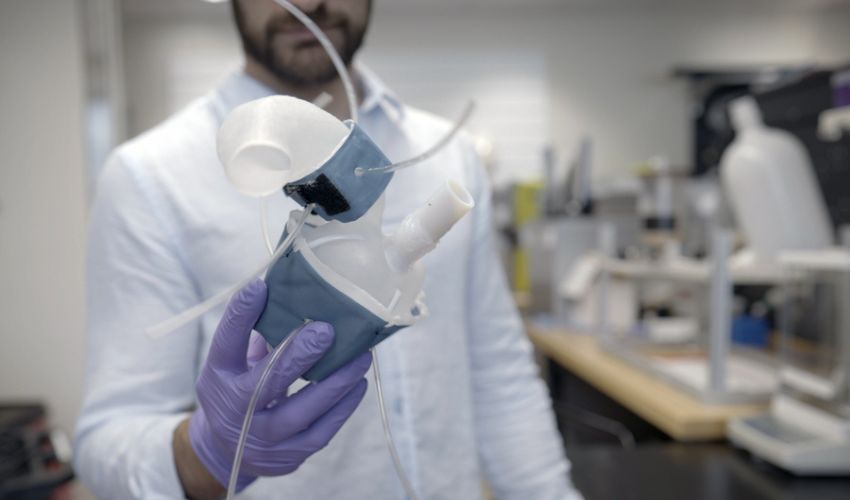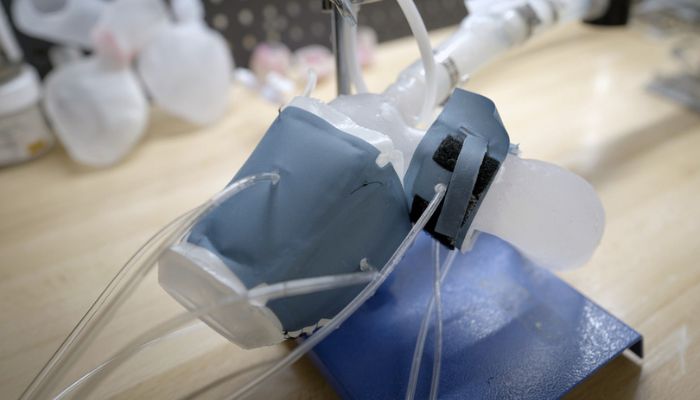MIT Has Unveiled 3D Printed Hearts That Look and Act Like the Real Thing

Human technology has advanced so far in the past few centuries, and it is undeniable that one of the sectors where we have seen the most growth is medical. Considering that nothing is scarier than the prospect of facing serious health issues, this is perhaps unsurprising. It is also one of the sectors that is the most innovative in general, always seeking to adopt new technologies, including of course additive manufacturing. In the latest news, MIT engineers have successfully created a 3D printed robotic heart which can perfectly replica that of a patient, down to look and even pumping, allowing for more effective treatment for heart diseases.
Heart problems are one of the largest causes of death around the world. In fact, every year about 647,000 Americans die from heart disease according to Healthline, meaning it is the cause of one out of every 4 deaths in the country. The CDC even notes that it is the number one cause of death in the USA. Furthermore, data have shown that the numbers are only increasing, with a study showing that during the pandemic the heart attack death rates in particular took a sharp turn for all age groups. As such finding ways to treat heart diseases is a number one priority for many in medicine. Here 3D printing especially could play a key role in helping to tailor treatment to each patient.

The 3D printed heart replica
A More Realistic 3D Printed Heart Replica
This particular project was the brainchild of MIT researchers including Luca Rosalia, Caglar Ozturk, Debkalpa Goswami, Jean Bonnemain, Sophie Wang, and Ellen Roche, working as well with Benjamin Bonner of Massachusetts General Hospital, James Weaver of Harvard University, and Christopher Nguyen, Rishi Puri, and Samir Kapadia at the Cleveland Clinic in Ohio. The goal? To make a robotic heart that is a soft and flexible replica of a patient in order to help treat different diseases of the hearts, including finding more suitable implants or developing the best function and fit for a synthetic valve in an aorta.
To do so, they turned to 3D printing. Or more specifically, they used a polymer-based ink which once cured was able to squeeze and stretch, similar to a real beating heart. This was made off of medical scans of patients which were then converted into a 3D model and printed, resulting in a soft, anatomically accurate shell of both the ventricle and vessel. Moreover, in order to reproduce the pumping of the heart, the team made sleeves to wrap around the form that could be connected to an air pumping system, allowing them to contract and constrict the models. Roche commented, “Being able to match the patients’ flows and pressures was very encouraging. We’re not only printing the heart’s anatomy, but also replicating its mechanics and physiology. That’s the part that we get excited about.”
Ultimately, this seems to have been a success and the researchers were able to show that they could not only perfectly replicate the shape and look of the heart but also accurately replicate the heart-pumping pressures and flows previously measured in each patient. This ultimately was used to see whether the hearts could help determine suitable treatment for patients. For example, comparing implants of different sizes, enabling them to see which one would result in the best fit and flow. The researchers note that it may be particularly helpful in developing ideal treatments for individuals who may have unique or challenging cardiac geometries. You can find out more about the projects in the news from MIT HERE.
What do you think of these 3D printed heart replicas? Do you think they’ll be able to help in treatment of heart disease? Let us know in a comment below or on our LinkedIn, Facebook, and Twitter pages! Don’t forget to sign up for our free weekly Newsletter here, the latest 3D printing news straight to your inbox! You can also find all our videos on our YouTube channel.
*All Photo Credits: Melanie Gonick, MIT







